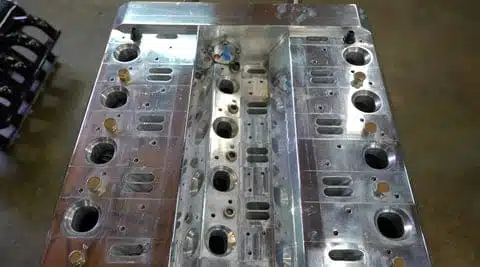Discover the most extraordinary rotary engine! With 12 rotors and an impressive displacement of 15.7 liters

In the world of automotive engineering, few creations manage to impress as much as the Wankel engine with 12 rotors. With an impressive displacement of 15.7 liters, this engine redefines the limits of what is possible in terms of design and performance. Its compact size compared to a conventional V8 and its Y configuration make it a masterpiece of mechanical innovation. More than just a simple component, it is a statement of power and sophistication for true enthusiasts of automotive technology.
Among the jewels of automotive engineering, the 12-rotor Wankel engine stands out as a creation that is both innovative and bold. This engine, which challenges conventional norms, combines a compact structure with impressive performance. Driven by passion, an individual managed to build it from scratch, offering a new level of power and an unforgettable acoustic experience. Next, we will explore each fascinating detail.
Unique structure and design of the engine
At first glance, the design of the 12-rotor Wankel engine is striking enough. With 15.7 liters of displacement, this engine manages to pack all its components within the size of a standard V8 engine. This achievement is primarily due to its ingenious Y configuration, consisting of three banks with four rotors each. Such a structure not only enhances its performance but also guarantees its reliability. This architecture stands out for its innovation, inspiring many in the automotive community to reconsider what is possible in terms of engine design.
The legacy of the Wankel engine
The Wankel rotary engine, known for its characteristic rotary motion of the rotor, has always been a symbol of technical advances and superior performance. Adopted by the famous Mazda 787B that won the 24 Hours of Le Mans in 1991, its four-rotor variant already laid the groundwork for others to surpass. This development by Tyson Garvin is not only a personal achievement but also a tribute to the rich history of the rotary engine in automotive competition.
Numbers that dazzle
Among the most imposing aspects of this engine is its ability to generate up to 1,419 CV (1,400 hp). Additionally, its ability to reach 10,000 rpm and develop torque of 1,085 Nm at just 2,000 revolutions makes this engine a truly formidable machine. These impressive numbers are merely a glimpse of what could be achieved if turbochargers and competition fuels were integrated.
The creation behind the myth
What sets this Wankel engine apart from other automotive achievements is the fact that it was handcrafted by Tyson Garvin. Garvin, with a determined why not in front of the world, challenged the limits of what could be achieved by building this impressive engine in his own garage. Through experimentation and the desire to create something amazing, his masterpiece is not only a showcase of technical prowess but also of personal innovation.
The future of the rotary engine
While this engine is already a fascinating reality, the automotive world continues to move towards more sustainable options. The possibility of incorporating alternative fuel technologies, as explored in hydrogen rotary engines, could even push this extraordinary technology further. As technology advances, the rotary engine continues to spark interest as a potential source of eco-friendly energy in future vehicles.
A giant of automotive engineering
This 12-rotor rotary engine is undoubtedly a testament to the creativity and boldness of modern automotive engineers. With its impressive displacement of 15.7 liters, it redefines what is possible in the realm of the Wankel engine. In a segment where efficiency is often the priority, this colossus presents a different narrative, focused on extreme performance and artisanal innovation.
The ingenuity behind this 12-rotor engine, which was created by Tyson Garvin in his own workshop, underscores the indomitable passion that drives automotive enthusiasts worldwide. Such complexity in design and execution not only showcases significant dedication but also opens new avenues for how we conceive of competition engines in the future. The distinctive sound of this engine, capable of reaching up to 10,000 rpm and developing 1,419 CV, promises an unforgettable auditory experience for anyone lucky enough to hear it.
As the industry progresses towards more sustainable technologies, there is still room for innovations that break from convention. This 12-rotor engine challenges traditional expectations and demonstrates that exorbitant performance still has a place in the modern world. The functionality and aesthetics of this engine not only add unprecedented appeal for speed enthusiasts but also enrich the language of contemporary automotive design.
Thus, the 12-rotor rotary engine stands as a bastion in the high-performance engine community, a vibrant reminder that innovation and audacity are at the heart of all significant progress in the automotive world. This masterpiece continues to inspire many to explore new frontiers in automotive mechanics, in search of the next great feat that, like this engine, will leave an undeniable mark in history.






